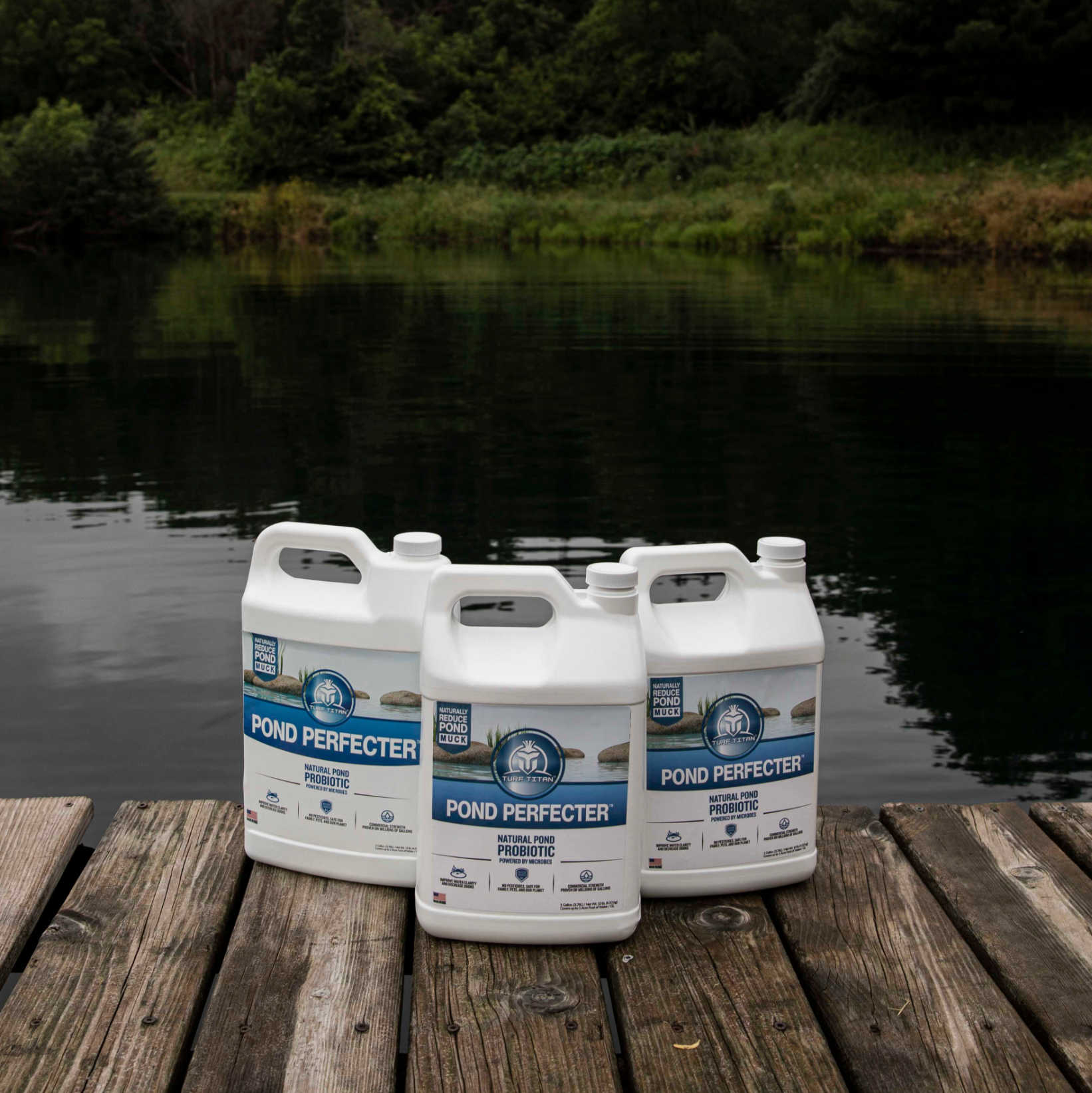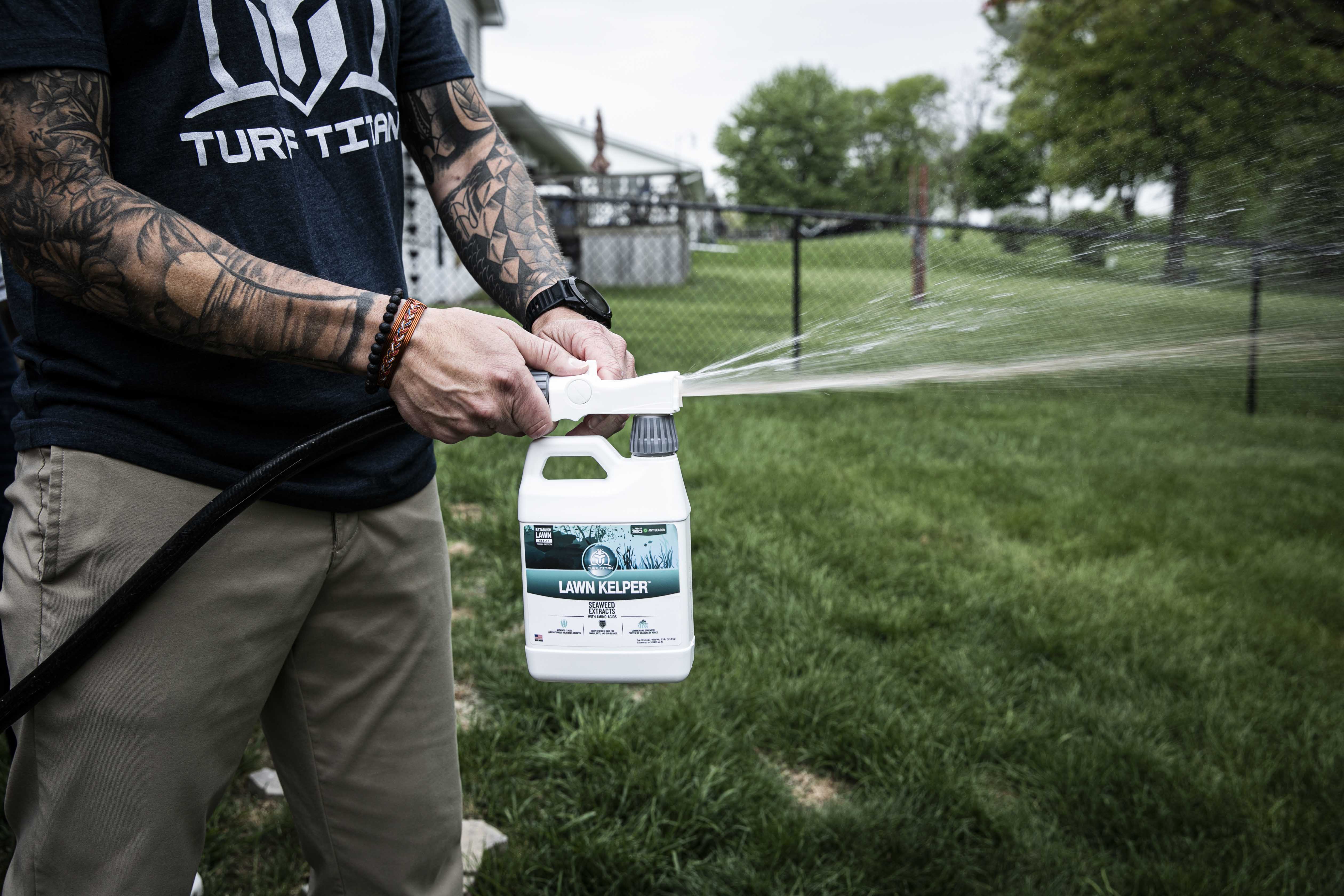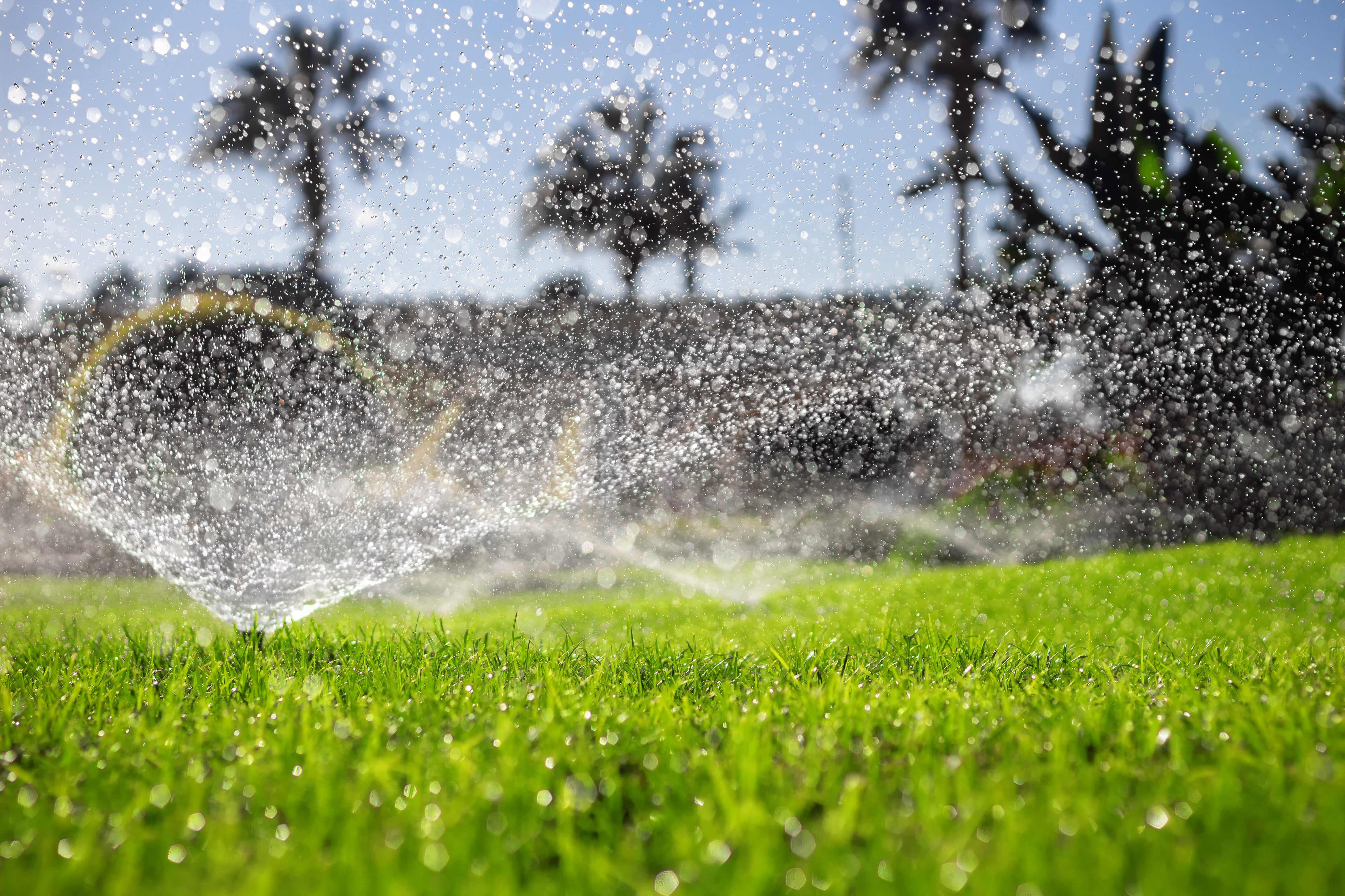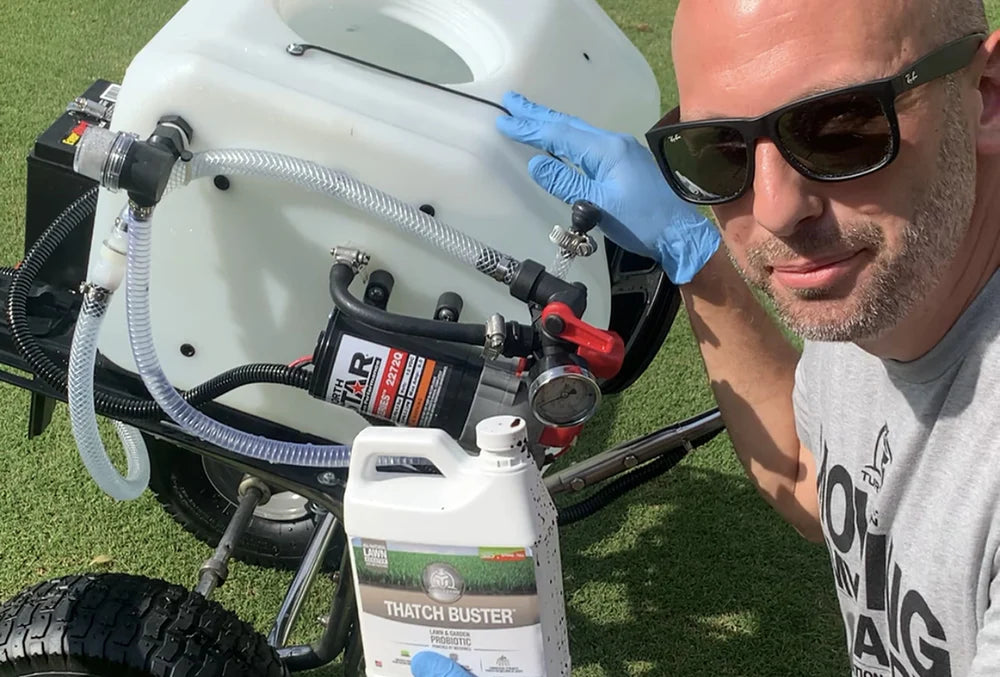Your lawn needs plenty of hydration to stay healthy, but that doesn’t mean you should just grab a hose and go wild. Improper watering can do just as much damage as no watering at all. To prevent this pitfall, avoid these common lawn watering mistakes.
1. Watering the wrong amount
The most common mistake homeowners make is overwatering or underwatering their lawns. Underwatering can cause grass to become wilted, stop growing, turn yellow or brown, and even die off completely. Overwatering often leads to yellowing, fungus, and weed overgrowth. Depending on conditions and grass type, find your lawn’s “Goldilocks” water level and stick to a consistent watering schedule. Most need about 1-1.5 inches per week (ideally spread out across a couple sessions) throughout the mowing season.
2. Watering the wrong way
If you learn your lawn stays healthiest with an inch of water per week, don’t just quickly blast your grass to get the job done. To prevent water from pooling or going to waste, take the time to gradually water grass. Allow water to penetrate the soil before throwing on more and make sure it’s distributed evenly across the entire lawn. Watering by hand with a hose nozzle that allows you to adjust the flow is your best bet. Treating your lawn with Hydro Holder can also make more efficient use of water by spreading the moisture throughout the topsoil and holding it there longer, ultimately reducing channeling.
3. Watering at the wrong time
If you water your lawn over lunch when weather is at its hottest, you’ll likely lose a lot of that moisture to evaporation. But if you wait until the evening, your lawn will probably stay wet overnight and be vulnerable to disease. To keep grass hydrated and healthy, water it before 9 a.m.
4. Watering without considering weather
While you can determine how much watering your lawn will need in a typical week, you’ll have to adjust that amount based on rainfall in your area. If your lawn gets hit with inches of rain from a major storm, you can probably skip the watering for the week. If you’re going through an extended dry spell, you might have to bump that number up to 1.5 inches.
5. Watering uneven areas the same as flat ground
Caring for a perfectly flat lawn can be much simpler than dealing with slopes, dips, and extreme angles. If your lawn features uneven ground, you should take extra care to ensure you aren’t creating excess runoff that pools at the base of slopes. Water these areas slowly and consider aerating with a product such as Thatch Buster to loosen soil for optimal absorption.









Leave a comment
This site is protected by hCaptcha and the hCaptcha Privacy Policy and Terms of Service apply.